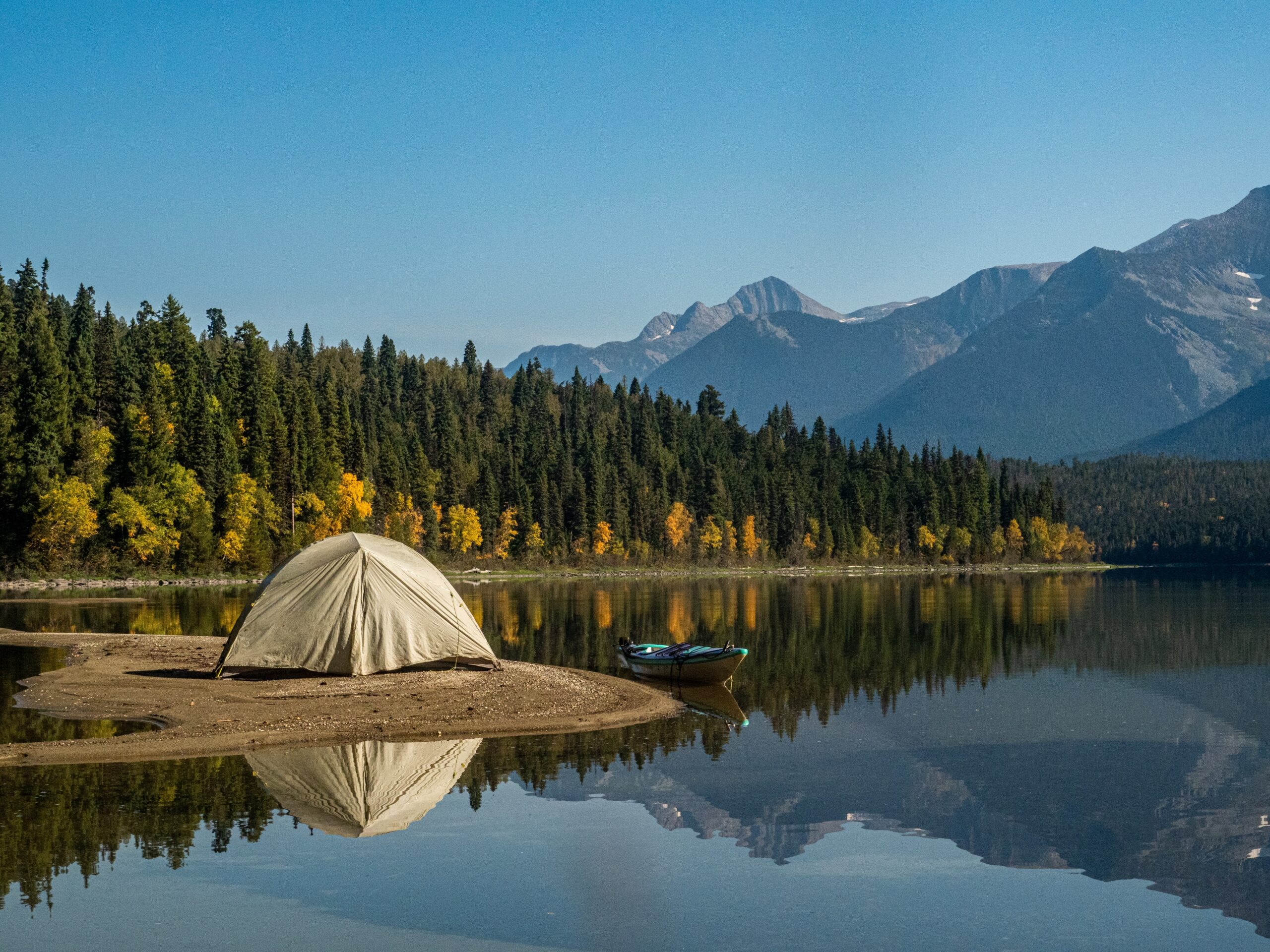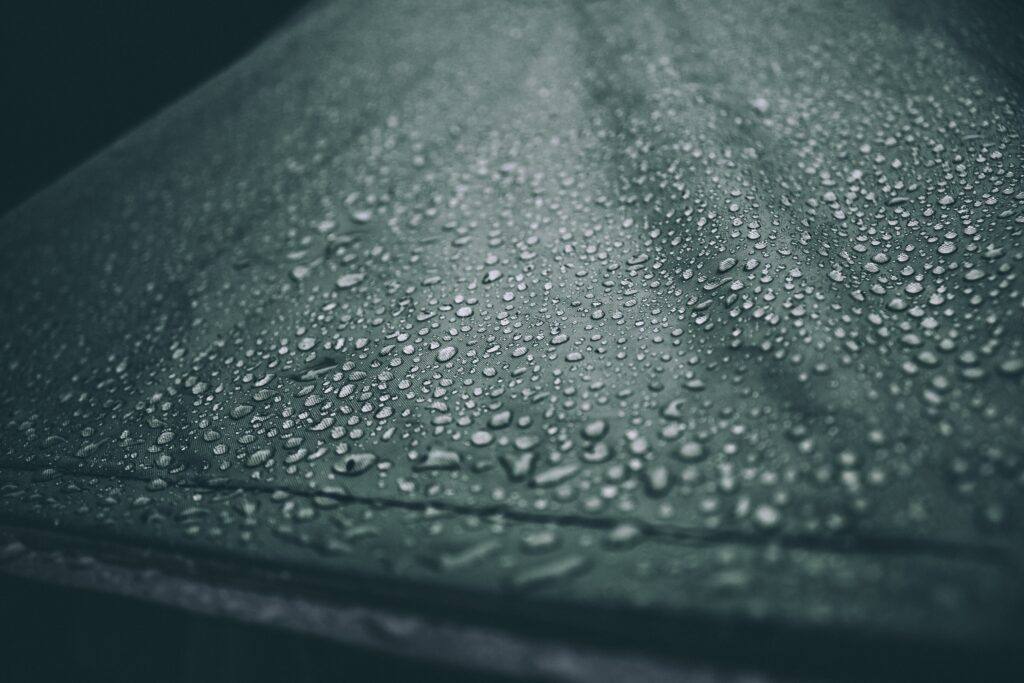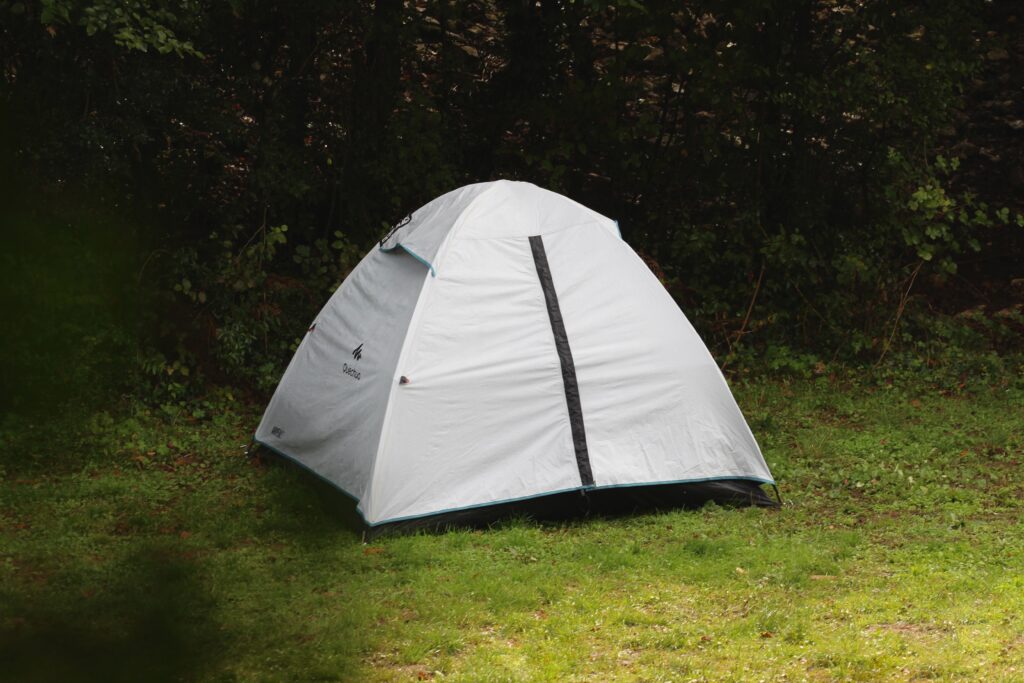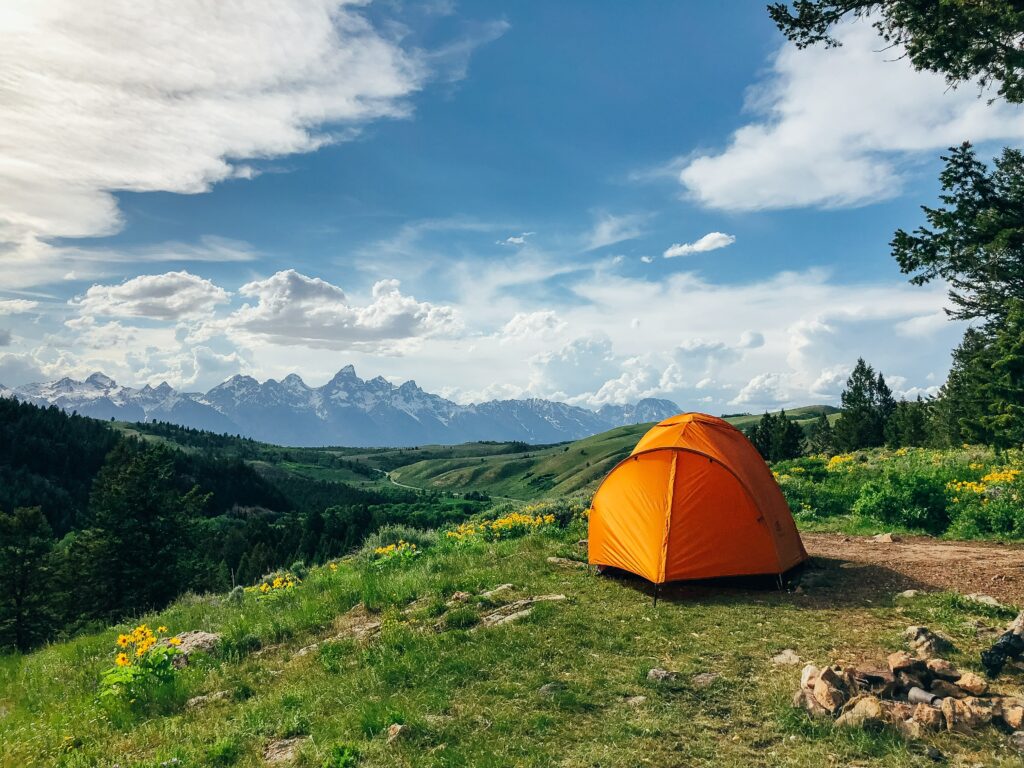How to Waterproof a Tent in 2025: Top Tips to Staying Dry
Are you looking for information regarding how to waterproof a tent? Look no further, for we have a comprehensive guide designed to help you.

Last Updated on 3 May 2025
Ever been on a camping trip, snug in your sleeping bag, only to wake up to a soggy surprise? Yeah, we’ve been there too. And nothing ruins a night under the stars quite like a leaky tent.
But fear not, fellow adventurers, because we’re here to show you how to waterproof a tent, step by step.
From understanding the essentials, through preparing your tent and applying sealants and coatings, to tailoring your waterproofing techniques to your specific camping needs. Stick with us, and you’ll be ready for whatever Mother Nature throws your way. Don’t let a leaky tent stop you from enjoying what the outdoors offers.
Read on to find out how to waterproof a tent.
Read more: 9 Top Camping Beds for 2025: Perfect Sleep Under the Stars
Read more: The Ultimate Guide to Camping in Wales in 2025
Key Takeaways
Regular maintenance like cleaning, drying, and keeping the tent waterproof with durable water repellent (DWR) and seam sealers is key to a successful camping trip.
It’s crucial to apply a fresh urethane coating and reapply the DWR treatment periodically, as tents degrade over time due to UV radiation, dirt, and moisture.
Proper tent storage is essential; ensure it’s clean, dry, and stored in a cool, dry place away from direct sunlight to maintain its waterproof properties.
How to Waterproof a Tent: Understanding Tent Waterproofing Essentials

A successful camping trip hinges upon your tent’s ability to withstand unexpected weather and early morning dew, especially with a focus on keeping the tent floor dry. Sounds simple, right? But there’s more to it than just throwing a rainfly over your tent, although that’s an excellent first step in keeping you dry.
Tents gradually lose their waterproof properties over time. Here are some reasons why:
Dirt and oil particles grind into the fabric during camping trips;
The sun fades and erodes the surface; and
The polyurethane coating on the outside becomes less effective with repeated use.
If the waterproof coating on a tent degrades, moisture may begin to penetrate the fabric, dampening your sleeping bag, clothes, and gear.
The seams are also a weak point. When the thin seam taping starts to wear off, water gathers around the seams and starts seeping through. So, what’s the solution? Enter Durable Water Repellent (DWR) and proper tent maintenance.
The Role of Durable Water Repellent
Durable Water Repellent (DWR) is a coating applied to the tent fabric to make it water-resistant. Made of liquid polyurethane, it can be applied with a wet cloth or a spray. It works by causing water to bead up on the outside of the flysheet and roll off the fabric, instead of soaking through. This effectively seals the fabric against water penetration.
But how can you tell if your DWR coating is still doing its job? Let’s look at the signs of wear on your tent fabric.
Recognising Tent Fabric Wear
Signs of wear on tent fabric can be as simple as fading, erosion of the material, or the tent failing to keep out the rain as effectively as it used to. Waterproofing can be compromised by prolonged exposure to moisture, damage from UV rays, and general wear and tear.
Sunlight’s UV radiation can weaken the fabric’s tear strength, making it more prone to wear and tear. Then there’s the issue of hydrolysis, where the coating of a tent’s fabric, like PU or silicone, breaks down because of moisture. This makes the coating soft and it starts to peel off, affecting the tent’s waterproofness.
Read more: Hiking for Beginners: The Ultimate Guide You Need to Know in 2025
Read more: Top Tips for Your First Solo Camping Trip in 2025
How to Waterproof a Tent: Preparing Your Tent for Waterproofing

Before applying any waterproofing treatments, you need to make sure that your tent is thoroughly clean. This ensures that the treatment sticks well to the fabric. But there’s more to prepping your tent than just a quick rinse. You need to carefully clean the tent fabric with a damp cloth to get rid of any dirt.
After cleaning, your tent should be completely dry before the application of any waterproofing products. This might seem like a lot of work, but trust us, it’s worth it. Your future dry and cosy self will thank you.
Cleaning Your Tent
Cleaning your tent might seem like a daunting task, but it doesn’t have to be. Start by using a mixture of boiling water, white vinegar, and rubbing alcohol to scrub the zippers with a toothbrush. Then, hand wash the tent in a bathtub with lukewarm water and a very mild soap, focusing on dirty areas with a sponge. If you have a large tent, and you have the space, put your tent up outside to give it a good clean.
To tackle mould and mildew, follow these steps:
Dilute one part vinegar with four parts water.
Spray the mixture on the affected area.
Let it sit for a few minutes.
Scrub the area with a soft brush or sponge.
Rinse thoroughly with clean water.
Air dry the tent.
And remember, don’t stick your tent machine washing. This is because it could tear or stretch the fabric.
Drying Before Application
Now that your tent is spick and span, you need to let it dry before applying any waterproofing products. The best way to dry a tent is to set it up in a sunny, windy spot and let the wind and sun do their thing. It’s best to do this when you have plenty of time as you don’t want to put away a tent that’s still wet.
When we get back from our camping trips, I usually put our tent up straight away and get it cleaned and waterproofed, if the weather is favourable. That way, it has plenty of time to dry before I put it away later that day.
Sealing the Deal: Reinforcing Tent Seams

Sealing tent seams is a crucial part of the waterproofing process. It prevents water from seeping in through the stitched parts of the fabric.
If the tent seams are damaged or coming apart, they need to be repaired to prevent leakages. But don’t worry, sealing tent seams is a breeze and can be done in less than an hour.
There are several good brands for seam sealers and DWR sprays, with Nikwax being a popular choice.
Choosing the Right Seam Sealer
Selecting an appropriate seam sealer is a critical part of the process. Here are some top picks for different types of fabrics:
For silicone-treated fabrics: Silicone sealers work best.
For polyurethane-coated fabrics: Polyurethane sealers are a better match.
For nylon tents: Gear Aid Fast Cure and Gear Aid Seam Grip Seam Sealer are top picks.
For polyester tents: Seam Grip FC, a fast-curing, water-based seam sealant, is the best choice.
Step-by-Step Seam Sealing Guide
Sealing your tent seams is simple. Here’s how to do it:
After cleaning the seam area, apply a layer of tent sealant.
Use a brush or roller to spread the sealant evenly over the seams, making sure to cover the entire seam including any stitching.
Allow the sealant to dry completely, which usually takes around one hour for the application process.
Wait at least 24 hours for the sealant to fully cure and dry.
It’s a good idea to re-seal the seams every three to four years to ensure your tent stays waterproof.
Revitalising Tent Coatings

Over time, waterproof coatings can wear off with use. Application of a new urethane coating is essential for maintaining the tent’s waterproofing. When you start seeing stuff flaking off from the inside of your rainfly or the floor of your tent, it’s time to reapply a urethane coating.
Adding a new layer of DWR coating to a tent refreshes the urethane coating and extends the life of the tent. And in today’s economy where money can sometimes feel tight, taking care of what you already have is important. Once you’re finished using the tent, make sure to let it dry for at least 12 hours or overnight in a dry area. This practice aids in preventing mildew and prolonging the tent’s lifespan.
Reapplying Urethane Coating
Urethane coating is a protective layer that’s put on tents to make them waterproof and more durable. It’s often used in family camping tents and backpack-portable tents. You know it’s time to reapply a urethane coating when the original coating is flaking off or when water doesn’t bead on the fabric’s surface and starts to soak through.
To reapply, first strip off the old thin coating, give the surface a good clean, and then apply a nice, thin layer of new tent sealant that’s urethane-based.
Enhancing with DWR Coating
DWR coating is like a waterproof shield for the outer layer of a tent, making it super resistant to water. It makes water bead up and slide off the fabric instead of soaking in, giving the tent an extra tough layer that amps up its waterproofing power. To apply the coating, cover the outside of the tent evenly with a DWR spray, brush, or sponge and wipe off any extra stuff to avoid buildup.
A new coating should be applied every few months, depending on how much you use the tent and how rough the conditions are.
Read more: A Hiking Backpack Guide: 9 of the Best in 2025
Read more: 36 Tips for Staying Warm When Winter Camping in 2025
Additional Waterproofing Techniques

Beyond using sealants and coatings, there are additional waterproofing techniques that can give your tent added protection. One such technique involves using a waterproof tarp as an alternative to chemical-based tent waterproofing treatments.
Another technique involves adding another layer of protection against moisture from the ground with a groundsheet.
Using Tarps for Extra Protection
Tarps offer excellent rain and wind protection, making them a versatile addition to your camping gear. To properly install a tarp for tent waterproofing, follow these steps:
Choose a tarp that’s big enough to cover your tent and give it good protection.
Lay the tarp flat and position it over your tent.
Use pegs or stakes to secure the corners and edges of the tarp.
The best materials for camping tarps are nylon, polyester, Dyneema DCF, siliconised nylon, siliconised canvas, vinyl, and polyethylene.
Groundsheet Considerations
A groundsheet adds another layer of protection against moisture from the ground, helping to keep the inside of the tent dry. Some benefits of using a groundsheet include:
Added protection against moisture;
Helps to keep the inside of the tent dry; and
Some groundsheets are treated with water-repellent products to make them even more waterproof.
A bathtub sewn-in groundsheet is important because it keeps water out of the tent, adding an extra layer of protection and improving waterproofing.
Maintaining Your Tent’s Waterproofness

Maintaining your tent’s cleanliness is key to preserving its waterproofing. Additionally, refreshing the DWR and the seam sealant periodically, every few years, yields optimal results. This will help to ensure that your tent remains waterproof and in good condition. You also need to ensure that your tent is stored properly to maintain its waterproof abilities.
Regular Maintenance Tips
Regular tent maintenance helps protect the fabric from UV rays and moisture, keeping the tent waterproof and making it last longer. Cleaning the tent regularly to avoid damage, spot-cleaning stains with gentle solutions, and making sure it’s dry before putting it away all contribute to maintaining the tent’s waterproofness.
If you’re using your tent for about two or three weeks a year, you should think about proofing it every couple of years to keep it waterproof.
Proper Tent Storage
Proper storage is a fundamental factor in retaining your tent’s waterproofing. Here are some tips:
Store it in a dry, cool place away from direct sunlight;
Always make sure the tent is completely dry before putting it away; and
When packing away a waterproofed tent, fold the dry side to dry side and the wet side to wet side to maintain the waterproofing.
Store tents in a cool, dry spot, away from direct sunlight. Make sure the tent is clean and fully dry before stashing it, and avoid placing it directly on the floor to prevent any potential moisture damage.
Weatherproofing Canvas Tents

Weatherproofing canvas tents requires specific attention due to their unique characteristics. Canvas material uses the natural properties of the fibres to make a waterproof fabric.
Canvas tents may leak a little the first few times they get rained on because the waterproofness of cotton canvas improves once it becomes wet.
The Unique Nature of Canvas Material
Canvas is a tough, heavy-duty fabric woven from cotton or a mix of cotton and synthetic fibres, making it super durable compared to nylon tents. It’s breathable, waterproof, eco-friendly, and provides insulation. Plus, the way it’s woven, coated, and finished makes it durable and able to withstand different weather conditions.
Applying Waterproof Treatments to Canvas
Adding waterproof treatments to canvas tents helps protect them from moisture, so they can handle rain and water damage better. To apply the coating, cover the outside of the tent evenly with a DWR spray, brush, or sponge and wipe off any extra stuff to avoid buildup.
Assessing Tent Waterproof Ratings

The tent’s waterproof rating or hydrostatic head (HH), indicates the water column height the tent fabric can tolerate before leakage begins. This rating is important as it shows how much water pressure the tent fabric can handle without leaking, so you can figure out if it’s good for rainy weather.
Understanding HH Ratings
The HH rating of a tent tells you how waterproof the fabric is by measuring how tall of a column of water the fabric can hold back before it starts to leak. A higher HH rating means that the tent is more waterproof, so it can handle heavier rain without leaking.
A tent should have an HH rating of about 1500mm to 2000mm to provide good protection and be considered waterproof.
Comparing Different Tents
When comparing different tents, the waterproof rating, the quality of the material, and the coating it has are all important factors to consider. Tents designed for moderate rainfall usually have an HH rating of about 1500mm to 2000mm. But some brands go even higher, offering tents with ratings like 4500mm or 5500mm, which are better for handling harsh weather. Brands like Nikwax and MSR are known for their superior tent waterproofing.
Read more: The 7 Best Family Tents for 2025
Read more: The Ultimate Guide to the Best Camping Coffee Maker in 2025
Tailoring Waterproofing to Your Camping Needs

Your camping style can influence the degree of waterproofing required for your tent. Modern tents are engineered with enhanced protection and waterproofing, albeit some models may offer superior resistance at a higher price point.
Different weather conditions also impact how you need to waterproof a tent. For instance, when it’s rainy, you’ll want to make sure it has a durable water-repellent coating.
Evaluating Your Camping Style
Evaluating your camping style can help you determine the best waterproofing approach. You should carefully evaluate the tent materials and construction to see if they can handle the weather conditions you’ll be facing during your camping trips. The more you go camping, the more wear and tear your tent gets, which can make it less waterproof over time and require more maintenance.
The camping environment also plays a role in how you decide to waterproof your tent during the camping season.
More Tips for Specific Conditions
In windy conditions, make sure your tent is set up properly with the right tension and stakes. Dome-shaped tents are especially good at handling strong winds.
In desert conditions, use a DWR or a tent-specific waterproofing spray to protect the tent fabric. Prepping for humid environments, you’ll want tents with mesh panels and adjustable vents to help with waterproofing and keep condensation at bay.
Final Thoughts
From understanding the essentials of tent waterproofing to preparing your tent and applying sealants and coatings, tailoring your waterproofing techniques to your specific camping needs, and even weatherproofing canvas tents, we’ve covered a lot of ground. Armed with this knowledge, we hope that you will now know how to waterproof a tent. With this information, you’re ready to tackle any weather conditions on your next camping trip.
So go ahead, take on the great outdoors, and remember – a dry camper is a happy camper!
Frequently Asked Questions
What can I put over my tent to make it waterproof?
You can make your tent waterproof by using a waterproofing agent on the outside of the tent. Be sure to pitch the tent in a well-ventilated outdoor area and wipe away any excess product.
Is it worth waterproofing a tent?
Yes, to keep your tent prepared for unexpected weather changes or new camping locations.
What is Durable Water Repellent (DWR) and how does it help make a tent waterproof?
Durable Water Repellent (DWR) is a coating applied to tent fabric that makes it water-resistant by causing water to bead up and roll off the fabric, sealing it against water penetration. This helps make the tent waterproof.
How can I tell if my tent fabric needs waterproofing treatment?
If your tent fabric is showing signs of fading, erosion or reduced effectiveness in keeping out rain, it may need waterproofing treatment. Keep an eye out for these indicators to ensure your tent remains weatherproof.
How often should I re-seal the seams of my tent?
You should re-seal the seams of your tent every three to four years to maintain its waterproofing and extend its lifespan.






